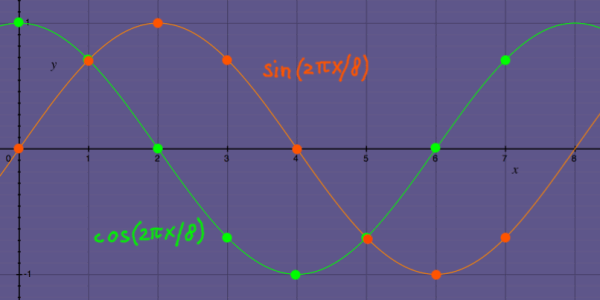
Imagine you have a signal and you want to examine how much of a
certain
frequency is in that signal. That could be done with two convolutions.
The signal would be convolved with the two orthogonal phases, sine and
cosine, of the frequency under examination. At every samplemoment two
inner products will tell the (not yet normalised) correlation over the
past N samples. Below, I plotted an example of sine and cosine vectors
doing one cycle in N = 8 samples:
 |
Recall that convolution vectors always appear time-reversed in the
convolution matrix. To time-reverse a sine-cosine set we do not need to
inspect the signal sample by sample to flip the array. Take a look at
the plot below, and the next one. A set of cosine and negative sine has
exactly the same property as a time-reversed set.
 |
In complex number terminology, it is the complex conjugate. cos(x)+isin(x) becomes cos(x)-isin(x):
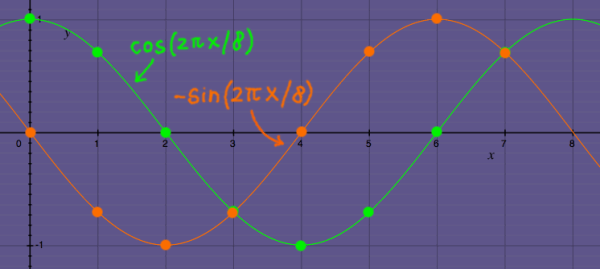 |
These vectors can be described as an array of complex numbers
cos(2*pi*n/8)-isin(2*pi*n/8)
or as complex exponentials e-i2*pi*n/8. The complex numbers
or exponentials are on the unit circle in the complex plane, with the
series showing a negative (=clockwise, yes) rotation:
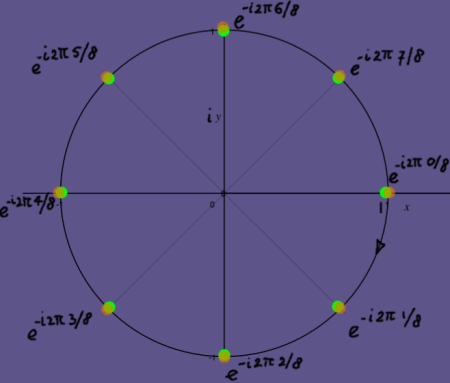 |
To compute these convolutions would require 2 times 8
multiplications, is 16 multiplications per samplemoment, and almost as
many additions. Now imagine you would like to detect more frequencies
than only this one. For lower frequencies the arrays must be longer. At
a typical samplerate of 44.1 KHz, one period of 40Hz stretches over
more than a thousand samples.
Computing convolutions with thousand-or-more-point arrays, just to
find a frequency in a signal, would be a ludicrous waste of
computational effort. After all, the amplitude in a complex sinusoid
vector is perfectly constant. Therefore it would almost suffice to take
a snapshot of the signal every N moments, and compute the inner product
once over that period. This will come at the price of probable jumps at
the boundaries of the snapshot. Such jumps form artefacts which will
distort the correlation. So the snapshot method is a compromise. But a
necessary one, specially since you may want to detect more frequencies,
covering the whole spectrum.
Convolution with 'snapshots' is not convolution in the proper sense.
Though it can be filed under 'block-convolution'. With
block-convolution, we could resolve up to N frequencies (conjugates or
aliases included) in each N-point snapshot. The block of a Discrete
Fourier Transform is an NxN square matrix with complex entries. The
blocks themselves are positioned on the main diagonal of a bigger
matrix. We will take a look at that from a bird's-eye-perspective:
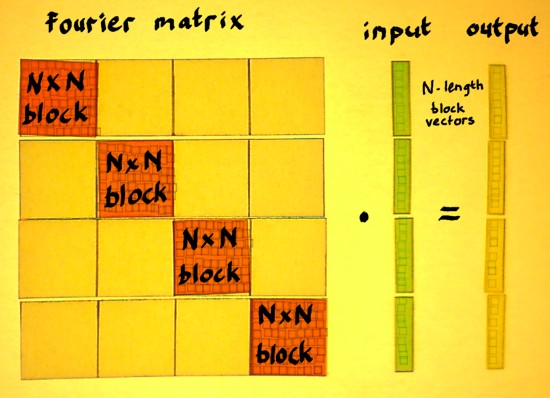 |
Compared to regular convolution, a big difference is: the shift in
the rows of the Fourier matrix. It shifts rightwards with N samples at
a time instead of one sample at a time. It also shifts downwards with N
samples at a time. The output is therefore no longer one signal, but N
interleaved points of N separate N-times downsampled signals.
Which were filtered by the N different vectors in the Fourier block.
This is not a conventional interpretation of Discrete Fourier
Transform. But I do not worry about that. There is enough conventional
descriptions of Fourier Transform in textbooks and on the web.
Let us now find out how to fill a Fourier block. Our example is with
N=8. We need to construct 8 complex vectors of different (orthogonal)
frequencies. Because I have the habit of indexing signals with n, like
x[n], I will reserve index k for the frequencies. The frequencies go in
the rows of the matrix.
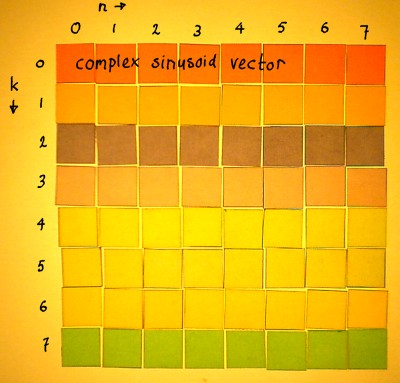 |
All entries will be filled with complex exponentials e-i2*pi*k*n/N.
For convenience, we write e-i2*pi*k*n/N = Wk*n.
Then, the Fourier matrix can be simply denoted: the Wk*n
matrix. No matter how big it is. There is always just as many
frequencies k as there are sample values n.
 |
In this definition, W can be recognised as a complex number
constant, defined by the value of N. The number N divides the unit
circle in N equal portions. W is the first point in clockwise
direction, thereby establishing the basic angular interval of the
matrix.
 |
In the figure below, the matrix is filled with the Wkn
powers:
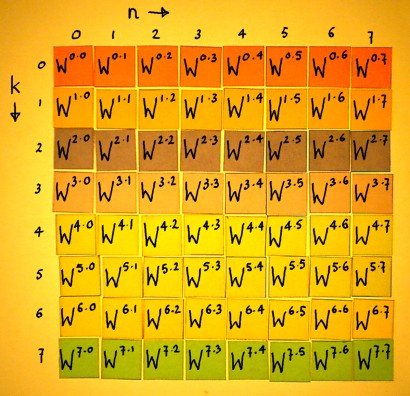 |
Do the multiplications:
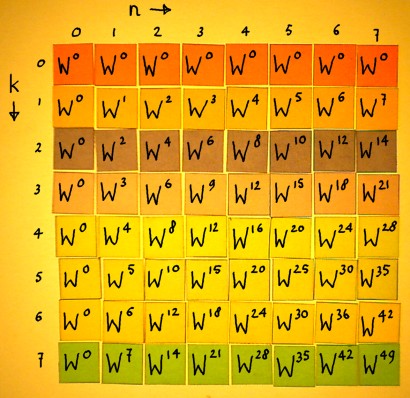 |
Row number k=0 represents DC, with e-i2*pi*k*n/N being e0i
in every entry. Row number k=1 represents the fundamental frequency of
the matrix, doing one cycle in 8 samples. This is the complex vector
that I took as the first example earlier on this page. Row number k=2
represents a frequency going twice as fast. It is the second harmonic.
Here is a plot of sine and cosine in the second harmonic:
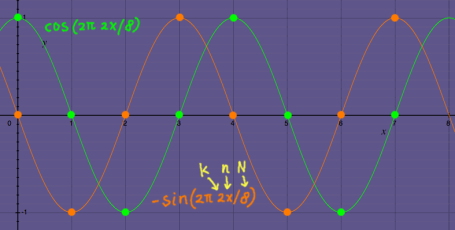 |
The third harmonic does three cycles in 8 samples:
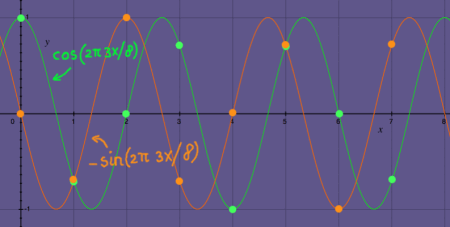 |
Everytime, complex exponentials of the fundamental period are
recycled. No new exponentials will appear. Here is how the third
harmonic moves round the unit circle on the complex plane:
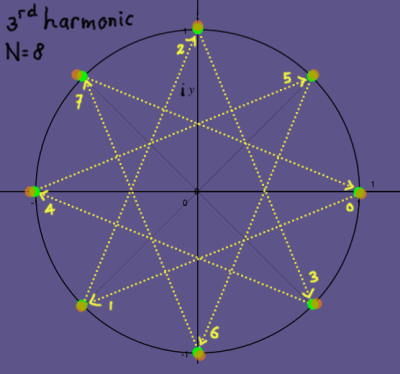 |
The next one is the fourth harmonic. In the case of N=8, the fourth
harmonic is the famous Nyquist-frequency. Sine cannot exist here. On
the complex plane, the only points are -1 and 1 on the x-axis.
 |
The fifth harmonic is the mirror-symmetric version of the third
harmonic.
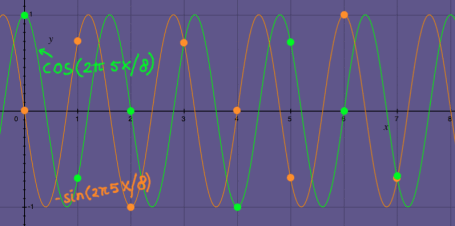 |
When their iterations over the unit circle are compared, their
kinship is clear:
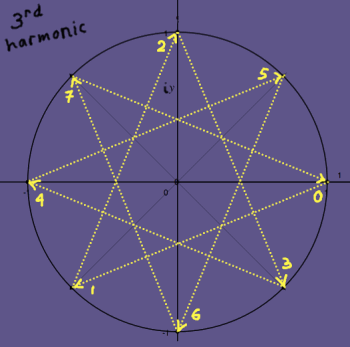 |
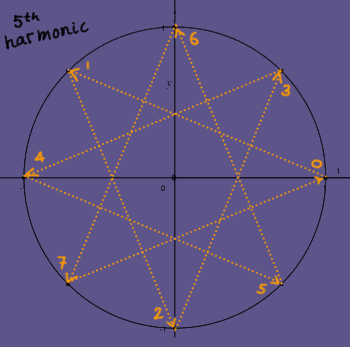 |
They are conjugates. To put it in other words: if the third harmonic
would rotate in reversed direction, it would be identical to the fifth
harmonic. But all harmonics have a well-defined rotational direction,
because they are complex. All vectors are unique, and orthogonal to
each other. Such conjugate distinction, by the way, can not exist in a
real (input) signal: there we speak of aliases.
The sixth and seventh harmonic are also conjugates of other
harmonics in the matrix. When an overview of the harmonics is made, it
becomes clear that row k=0 and row k=4 have no conjugates. These are DC
and Nyquist-frequency.
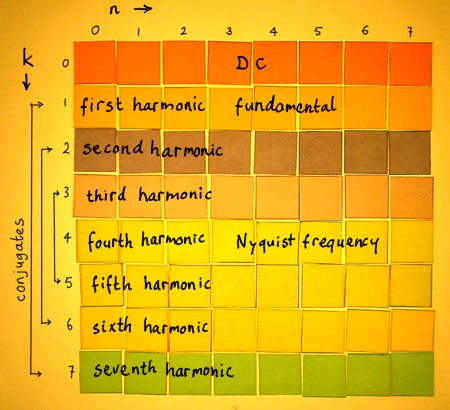 |
Because the powers Wkn are periodic modulo N, the vectors
can be rewritten. W8 is equal to W0, W9
is W1 etcetera. It is integer division by 8, and the
remainder is the new exponent of W. In the rewritten Fourier matrix for
N=8, the conjugates display themselves quite clearly:
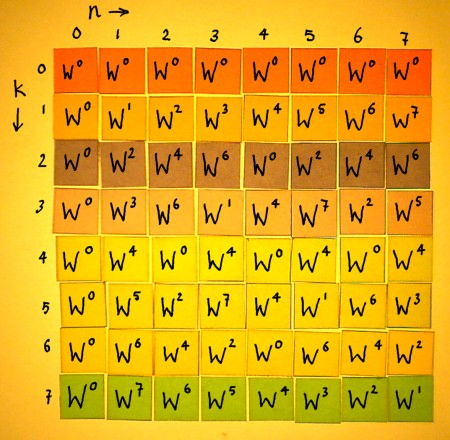 |
We are not completely done with the Fourier matrix yet, because it
needs normalisation. There is a certain freedom, to choose a
normalisation type according to the purpose of the transform. I have
done a separate page on that because it is too complicated to describe
in just a few words. But strictly speaking, a normalised vector is a
vector with norm 1, or unity total amplitude. That requires a
normalisation factor 1/N1/2 for all entries of the Wkn
matrix. In that case, the Fourier matrix is orthonormal, and the
transpose of it is exactly the inverse. An orthonormal Fourier matrix
can be defined:
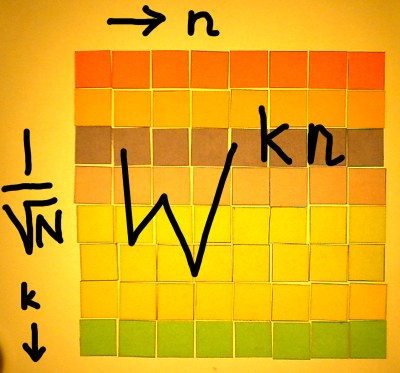 |
The output of the matrix operation is called 'spectrum'. It
expresses the input content in terms of the trigonometric functions of
the Fourier matrix. These functions are pure rotations, and the output
coefficients tell the amount of each, as found in the input. The
normalisation type is crucial to the interpretation of these
coefficients. And the transform block-width N is decisive for the
frequency resolution.
Apart from being informative about frequencies, the coefficients
have other virtues. They can be exploited to manipulate the frequency
content. After such manipulation, the inverse Fourier Transform can
revert the spectrum back to where it came from: time, space, or
whatever the input represented.
To construct the inverse Fourier matrix, we have to find the
transpose. Normally, that can be done by turning the rows into columns.
So it would look something like this:
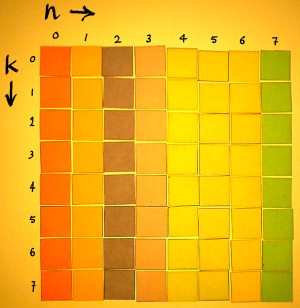 |
But I have not yet written the entries, because there is something
special with these. They are complex, and need to be transposed as
well. This is a good moment to inspect the complex entries in detail.
On the matrix pages I described complex multiplication more than once.
It has a 2x2 square matrix. Therefore, one complex Wkn entry
is actually four real entries:
 |
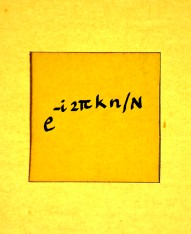 |
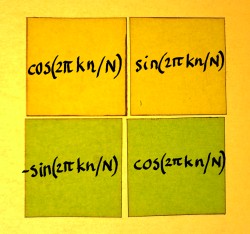 |
When the rows of the 2x2 matrix become the columns, we simply get
the complex conjugate. The complex exponential then rotates
anti-clockwise, which is called positive. The sign in the exponent of Wkn
must flip and it becomes W-kn.
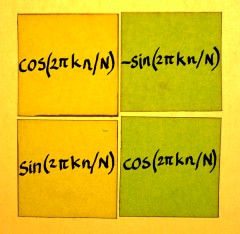 |
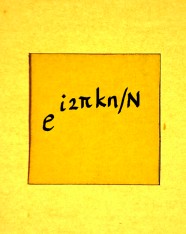 |
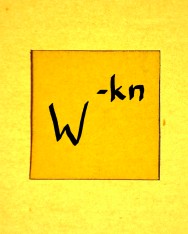 |
Now I can write the Wkn powers in the entries of the
transpose:
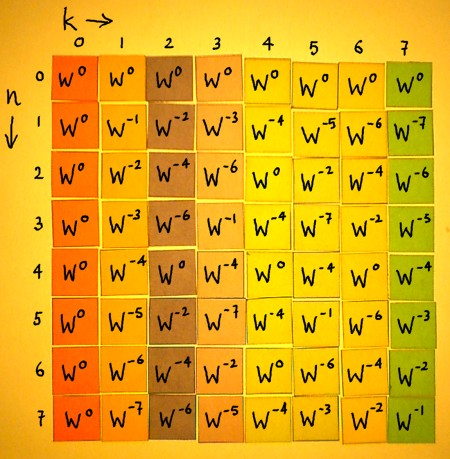 |
The only difference with the original matrix is the direction of
rotation. Apart from their sign, the powers of W have not changed. The
matrix is almost symmetric over it's diagonal. The only thing that is
not symmetric, is hidden within the 2x2 complex matrices behind the Wkn
entries.
The normalised Fourier matrix and it's inverse can be visualised:
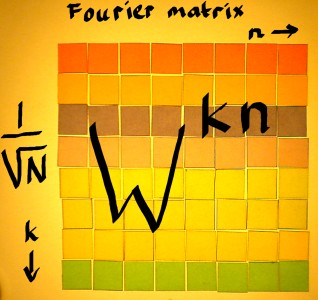 |
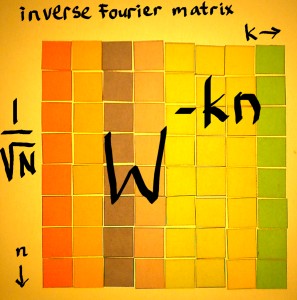 |
It can be written algebraically, with the hatted x being the
transformed array:
 |
And the inverse transform:
 |
Discrete Fourier Transform is a very clear and systematic operation,
therefore the description of it can be so concise. But the formula is
only the principle of DFT. Implementation of the transform will require
adaptations, in order to reduce the amount of computations in one way
or another. For the transform of a real signal with small block-width
N, computation of the conjugates can be skipped. For large N,
factorisation of the complex matrix makes for efficient algorithms.
Then we speak of the Fast Fourier Transform. Whish I could sketch an
FFT operation with my coloured square paperlets....